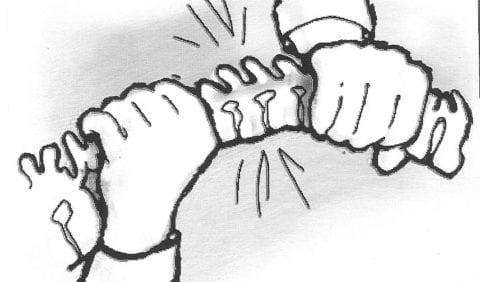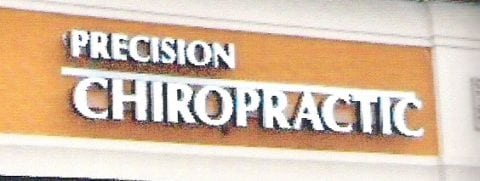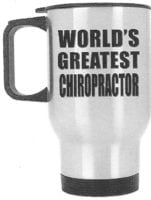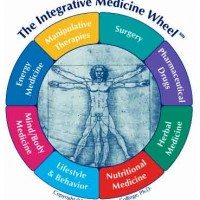 When I published my book Bonesetting, Chiropractic, and Cultism in 1963, one chapter was devoted to “Chiropractic Technique Wars.” Dozens of different chiropractic techniques were being used by chiropractors who claimed that their method of adjusting vertebral subluxations to relieve pressure on spinal nerves was the most effective way to cure disease. Most techniques were based on a Meric system which associated certain vertebrae with certain organs. The Palmer School of Chiropractic, however, was teaching the H.I.O. (hole-in-one) technique, which limited treatment to adjustment of the atlas, the uppermost neck vertebra. The Palmer School had initially taught that subluxations anywhere in the spine could cause disease, as “proven” by use of Palmer’s Neurocalometer, a hand-held paraspinal scanning device that used a thermocouple to measure heat claimed to be associated with a vertebral subluxation. B.J. Palmer, the developer of chiropractic, eventually theorized that only the atlas vertebra could be subluxated and that it was only necessary to adjust the atlas to relieve pressure on the brain stem to cure disease ─ a departure from the revelations of D.D. Palmer, the founder of chiropractic, who claimed that he had cured deafness and heart disease by adjusting a thoracic vertebra.
When I published my book Bonesetting, Chiropractic, and Cultism in 1963, one chapter was devoted to “Chiropractic Technique Wars.” Dozens of different chiropractic techniques were being used by chiropractors who claimed that their method of adjusting vertebral subluxations to relieve pressure on spinal nerves was the most effective way to cure disease. Most techniques were based on a Meric system which associated certain vertebrae with certain organs. The Palmer School of Chiropractic, however, was teaching the H.I.O. (hole-in-one) technique, which limited treatment to adjustment of the atlas, the uppermost neck vertebra. The Palmer School had initially taught that subluxations anywhere in the spine could cause disease, as “proven” by use of Palmer’s Neurocalometer, a hand-held paraspinal scanning device that used a thermocouple to measure heat claimed to be associated with a vertebral subluxation. B.J. Palmer, the developer of chiropractic, eventually theorized that only the atlas vertebra could be subluxated and that it was only necessary to adjust the atlas to relieve pressure on the brain stem to cure disease ─ a departure from the revelations of D.D. Palmer, the founder of chiropractic, who claimed that he had cured deafness and heart disease by adjusting a thoracic vertebra.
Going from one extreme to another, the Logan Basic College of Chiropractic was teaching that adjustment of the sacrum was the key to successful treatment of disease. Sacral realignment was done by pressing a thumb into a gluteal sacrotuberous ligament.
Combining two extremes, the Sacro-Occipital Technique, “based on the provable fact that every human who is sick or in pain has a distortion and a subluxation responsible for that sickness or pain,” required manipulation of both the occiput and the sacrum to restore nerve function by removing interference with the circulation of cerebrospinal fluid.
The Parker System, developed by a practice-building expert, taught full-spine adjusting based on a full-spine x-ray exam in order to increase the income of chiropractors. Displacement of vertebrae was measured in millimeters which were added up to determine the number of adjustments that would be needed to cure the patient’s condition.
Taking advantage of the frustration generated by antithetical chiropractic techniques, the Electrotactic theory of chiropractic, introduced in the January 1959 issue of the Journal of the National Chiropractic Association, offered chiropractors a treatment that would replace every other chiropractic treatment method. This new method, too nonsensical to explain, included the perennial leg-length check.
As time passed, the parade of chiropractic techniques grew longer. When the Association for the History of Chiropractic published Chiropractic: An Illustrated History in 1995 (Peterson 1995), it listed 97 entrepreneurial chiropractic techniques. The National Board of Chiropractic Examiners reported in Job Analysis of Chiropractic 2005 that individual chiropractors, on average, used six separate techniques in their practices. Of 15 listed techniques, the Meric System was still being used by 15% of chiropractors, 25.7% were using Palmer’s H.I.O. technique, 26% were using Logan Basic Technique, and 49.6% were using the Sacro-Occipital Technique ─ all based on subluxation theory.

Dozens of different chiropractic techniques generate advertising tactics designed to promote one chiropractic technique over another.
Subluxation theory still prevails
Other than sophistication in the promotion of chiropractic, the basic tenets of chiropractic have changed little since publication of my Bonesetting book in 1963. Most chiropractic treatment methods continue to be based on chiropractic vertebral subluxation theory, which is supported by state laws and taught in most chiropractic colleges. The word “subluxation” can be found in all but three of 18 North American chiropractic college catalogues.
COREscore, which uses handheld paraspinal surface electromyography and thermography scanning devices claimed to be effective (only by chiropractors) in locating and measuring the effects of a vertebral subluxation, is currently popular among subluxation-based chiropractors. This approach, with a new twist, includes a heart rate variability testing device applied to the patient’s hand to determine the effect of stress on the nervous system ─ along with an ear clip for use in pediatric applications.
With COREscore, “You can now become focused on what really matters ─ reporting on the presence of subluxations and the impact that nerve tension and spinal reactions have on human health and potential.” COREscore is designed to “Generate more referrals, increase potential retention, and turn your practice into a profit center”.

Lack of standardization of chiropractic treatment methods makes it difficult to evaluate the services provided by chiropractors.
Why are there so many chiropractic techniques?
The techniques of generic spinal manipulation, based on the laws of anatomy and physiology, are all similar when used appropriately in the treatment of musculoskeletal problems, no matter who provides such treatment. Chiropractic manipulation based on vertebral subluxation theory, however, is so contrary to what is known about anatomy and physiology that it has no factual basis and no testable substance. The subluxation construct is more an implausible, nonfalsifiable belief than a theory, making it easy to be exploited by chiropractic entrepreneurs who fabricate scientifically indefensible vertebral subluxation theories and treatment methods, taking advantage of struggling chiropractors who have been indoctrinated in subluxation theory.
Unfortunately, many chiropractors sincerely believe in subluxation-based chiropractic ─ conforming to a belief that makes them susceptible to technique peddlers who offer a new and effective technique that “really works” or which will, at least, provide a source of revenue.
Defining elusive chiropractic subluxations
There has been no evidence to indicate that a real orthopedic vertebral subluxation (a partial dislocation that causes musculoskeletal symptoms) can affect general health. Spinal nerves affected by vertebral misalignment, subluxation, osteophyte formation, or disc herniation affect only skin and the voluntary function of musculoskeletal structures. The body’s organs are regulated by autonomic cranial and sacral nerves that pass through solid bony openings and by ganglia and plexuses located outside the spinal column, unaffected by a vertebral misalignment or a segmental dysfunction. Hormones and other factors supplied by blood flow sustain the function of organs. There is no credible evidence to suggest that manipulating the spine for any reason will restore and maintain health as postulated by subluxation-based chiropractors.
Unable to clearly identify or define a chiropractic vertebral subluxation, subluxation-based chiropractors have used many different names to define a subluxation, such as a vertebra out of place, a neuro-biomechanical lesion, joint dysfunction, a spinal distortion, a rotational malposition, and so on. When it became apparent that commonly detected vertebral misalignment or a compressed spinal nerve had no effect on general health, subluxation theory was reworded to suggest that health problems could be caused by nerve interference resulting from a “vertebral subluxation complex” which affects joint-related nerve, muscle, connective, and vascular tissues. Since such subluxations are asymptomatic and not detectable by conventional imaging methods, many chiropractic treatment methods depend upon thermography, surface electromyography, and leg-length checks to detect the presence of subluxations. Such procedures can be influenced by bias and can be easily manipulated by the examiner to provide “proof” that subluxations are present.
Surface electromyography for subluxation detection
Surface electromyography (sEMG), paraspinal scanning with a hand-held device to detect electrical activity in muscles allegedly affected by vertebral subluxations, is a popular method of locating chiropractic subluxations. The American Academy of Neurology has concluded that surface electromyography, while useful for evaluating muscle movement disorders, was unacceptable as a clinical tool for diagnosing low back pain or neuromuscular disease
There is no reason to believe that surface electromyography can detect a real orthopedic subluxation, much less an asymptomatic “vertebral subluxation complex”.
According to Aetna’s Clinical Policy Bulletin No. 0112:
Aetna considers high-density surface electromyography (HG-sEMG), surface scanning EMG, paraspinal surface EMG, or macro EMG experimental and investigational as a diagnostic test for evaluating low back pain or other thoracolumbar segmental abnormalities such as soft tissue injury, intervertebral disc disease, nerve root irritation and scoliosis, and for all other indications because the reliability and validity of these tests have not been established. [emphasis added]
Like most major insurance carriers, Blue Cross Blue Shield reports that:
There are no data on the impact of SEMG on patient management of health outcomes. The evidence is insufficient to determine the effects of the technology on health outcomes. [emphasis added]

Colorful printouts from surface electromyography and thermography scans are often used to persuade chiropractic patients to undergo treatment for nonexistent vertebral subluxations.
Paraspinal thermography for locating vertebral subluxations
Thermography used to record skin temperature up and down the spine is often used along with sEMG to produce colorful printouts indicating the presence of vertebral subluxations. Extraneous factors that influence the flow of blood to the skin, or a little more pressure applied with a hand-held scanning tool, will produce indications of an abundance of subluxations in areas of the spine where a particular chiropractor might prefer to work. NUCCA practitioners, for example, following H.I.O. principles, concentrate on upper cervical manipulation.
A number of medical authorities have concluded that thermography has no proven medical value, including the American Medical Association, the Office of Health Technology Assessment (OHTA), and the American Academy of Neurology.
There are no published studies that demonstrate how the results of thermography can be used to improve patient health outcome.
Use of thermography or surface electromyography to locate subluxations may be used by subluxation-based chiropractors who might falsify evidence of vertebral subluxations in order to treat every patient they see for a variety of health problems.
Leg length checks
Many subluxation-based chiropractic techniques include use of a Derifield leg-length check to determine the need for an adjustment to correct a subluxation or to evaluate the results of an adjustment. Supposedly, a functional leg-length discrepancy is a temporary non-structural imbalance caused by the effect a vertebral subluxation has on musculoskeletal structures. Leg lengths, determined by bringing the feet together for visual inspection, return to normal when the subluxation has been corrected.
The Activator Method, which uses a spring-loaded stylus to tap a vertebra into alignment or to promote healing by removing the interference of a “vertebral subluxation complex,” includes use of nonsensical leg checks. Activator is used by 70% of the world’s chiropractors.
Correcting vertebral subluxations
Appropriate use of generic spinal manipulation that stretches muscles and produces cavitation (slight separation of joint surfaces) to loosen vertebrae can occasionally be helpful in relieving pain and restoring mobility when there is mechanical-type back pain, but the need for specific manipulation to correct a vertebral subluxation is rare. A true orthopedic subluxation may be a painful, partial dislocation that cannot be corrected by manipulation and should not be manipulated. Vertebral misalignments due to degenerative changes, such as disc degeneration, or structural deviations from normal, such as scoliosis, cannot be changed by manipulation. Acute mechanical-type back pain is most often the result of ligamentous, muscle, or joint injury that does not involve vertebral subluxation.
There is no credible evidence to suggest that vertebral subluxations can be detected by such dubious methods as thermography, surface electromyography, or leg-length checks. Yet, “subluxation stations” that utilize such methods are commonly found in the offices of chiropractors, some of whom are true believers and some of whom are concerned only about patient retention and profit.
A word to the wise
Not all chiropractic manipulative techniques are based on subluxation theory; some can be helpful as an option in a physical treatment armamentarium. It goes without saying, however, that any chiropractor who offers to treat non-musculoskeletal problems by adjusting vertebral subluxations, or who resorts to use of such alternative medicine measures as functional medicine or homeopathy, should be viewed askance.
In a promising new development that will assure appropriate use of spinal manipulation, a program associated with the Department of Physical Therapy at the University of Pittsburgh (Pennsylvania) is being developed to train and certify chiropractors and physical therapists as Primary Spine Practitioners (PSP) who work in a team environment caring for spine-related disorders.
References
Peterson D, G Weise. 1995. Chiropractic: An Illustrated History. Mosby-Year Book. St. Louis, MO.

